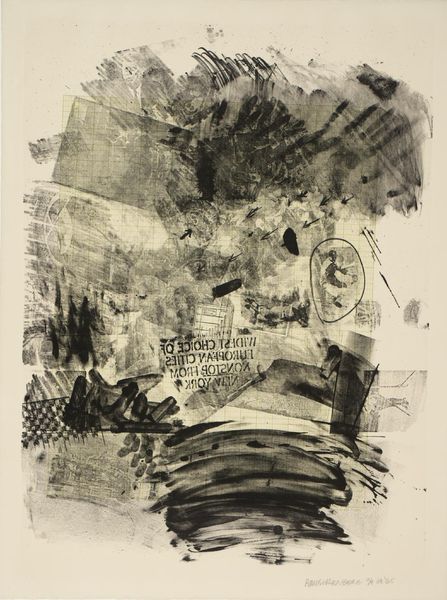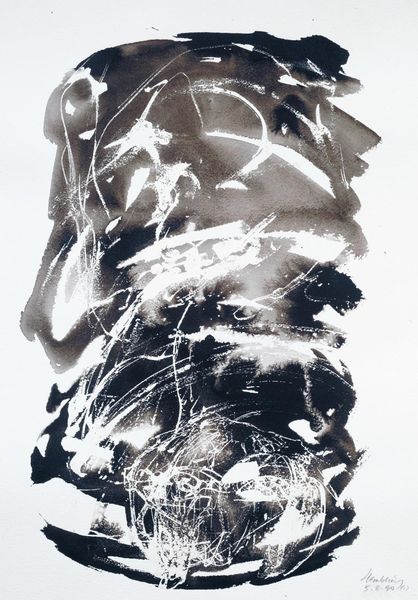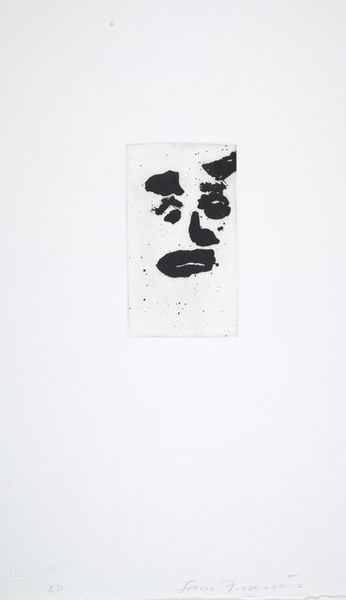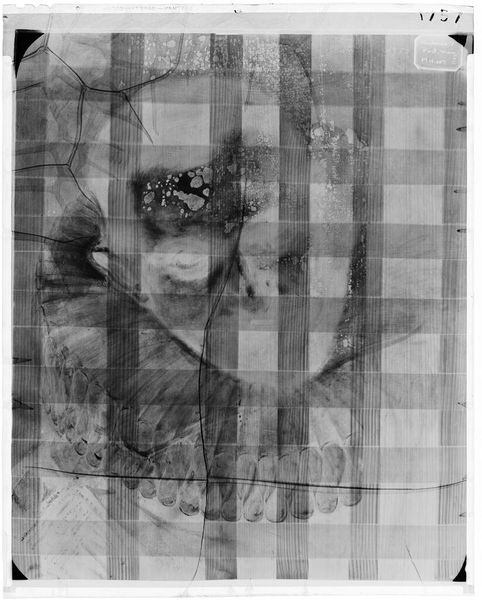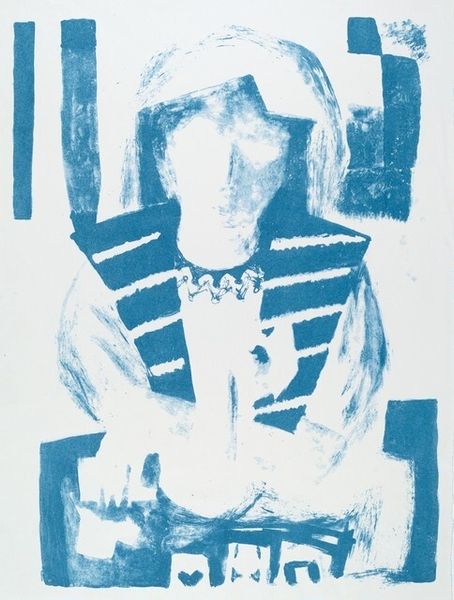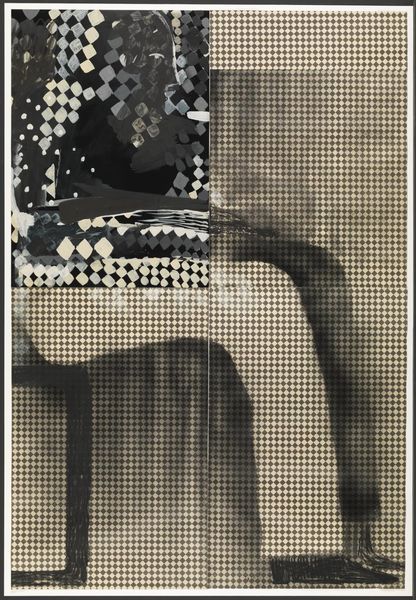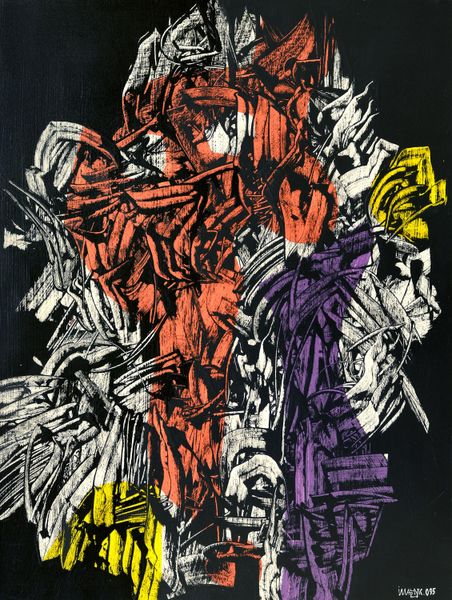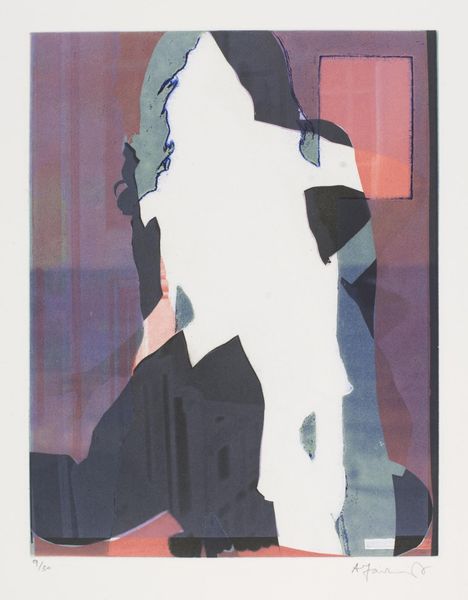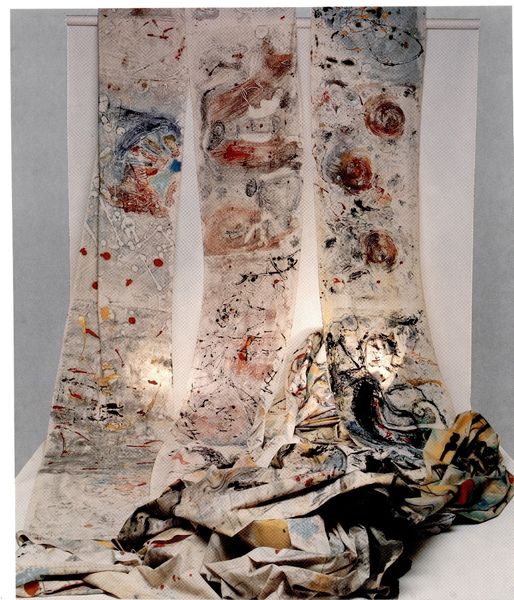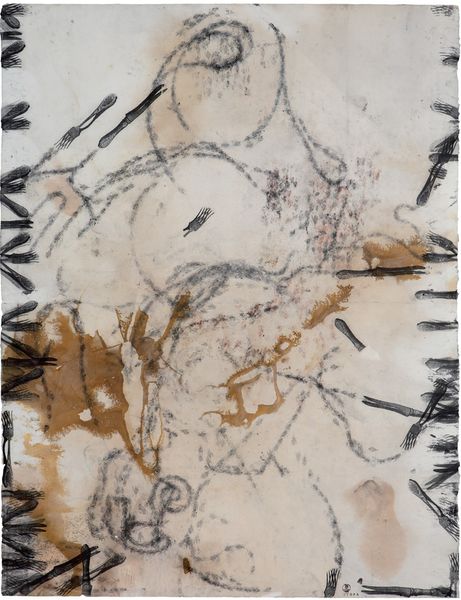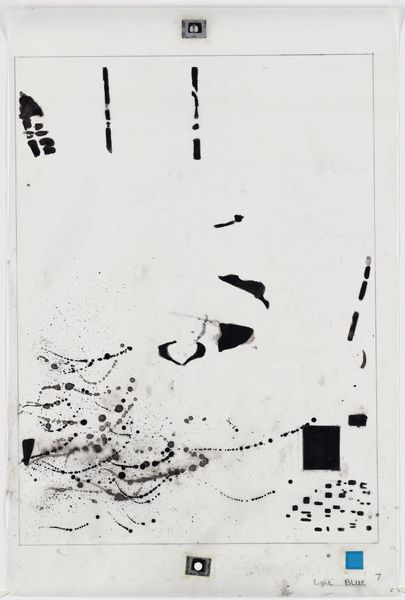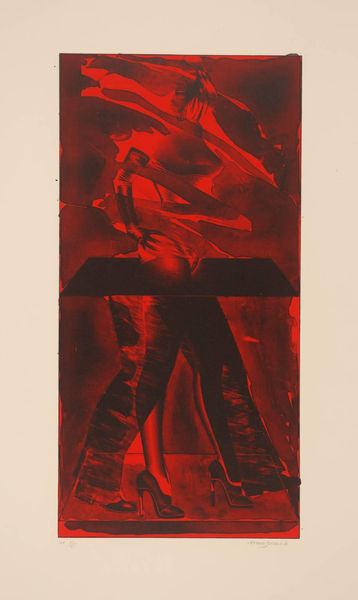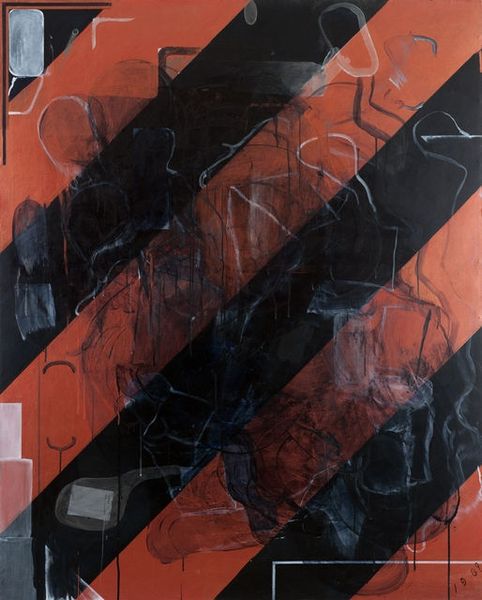
Copyright: © Thomas Kilpper | CC-BY-NC-ND 4.0 DEED, Photo: Tate
Curator: Thomas Kilpper, born in 1956, created this piece, "The Ring: Marie Lloyd." What hits you first? Editor: It feels spectral, almost a ghost trapped in newsprint. There's a weight to the image, yet it hangs so delicately. Curator: Kilpper often explores themes of power, celebrity, and exploitation. Here, he depicts Marie Lloyd, a music hall star, a working-class heroine of her time. Editor: Absolutely. Lloyd challenged Victorian norms, particularly regarding women's sexuality and working-class experience. That checkerboard background feels like the rigid structures she fought against. Curator: Exactly! And note the stark contrasts, the fragmented imagery. It's as if Kilpper is piecing together a memory, a rebellion. Editor: It reminds us that even popular culture can be a site of resistance. Lloyd's humor and directness were acts of defiance. Curator: Kilpper's rough technique amplifies that sense of defiance, doesn't it? It’s a powerful tribute to a woman who dared to be herself. Editor: A reminder of the ongoing struggle for visibility and voice, beautifully rendered.
Comments
tate 8 months ago
⋮
http://www.tate.org.uk/art/artworks/kilpper-the-ring-marie-lloyd-p78538
Join the conversation
Join millions of artists and users on Artera today and experience the ultimate creative platform.
tate 8 months ago
⋮
This is one of a series of unique prints generated from a site-specific work created in an office block on Blackfriars Road, in the London borough of Southwark. Orbit House was abandoned and scheduled for demolition when Kilpper gained access to the building in 1999. He carved a giant woodcut into the mahogany parquet covering the tenth floor, comprising an area of approximately 400 square metres. The woodcut depicted a boxing ring surrounded by an audience of some eighty characters whose names were cut around the edge of the image. The artist derived the portraits from photographs and etchings which he made into slides and projected onto the floor before carving the relief with chisels and a chainsaw. He then made a succession of prints, constituting individual portraits, on a range of new and found materials. He used old curtains left in the building, often sewing several pieces together to make one large, rectangular support. Paper sources include advertising hoarding paper and sheets of purple UV polythene film which Kilpper discovered screening windows in some rooms of the building. The herringbone texture of the parquet features strongly on all the uncut areas of the prints which were executed mainly in black ink using a specially-made giant, cement-filled roller. During the exhibition of the work, the prints were suspended on washing lines above the carved floor. Daylight from the surrounding windows filtered through their semi-translucent supports. Visitors would walk on the carved parquet while looking at the prints. A huge banner was printed from the entire surface (The Ring, collection the artist) and hung on the outside of the building for the duration of the installation. Tate owns twenty-one prints, twenty made on fabric (Tate P78537-P78556) and one on paper (Tate P78557). The Ring: Fight On (Tate T07671) is a section of the parquet flooring preserved before the building’s demolition in late 2000.
